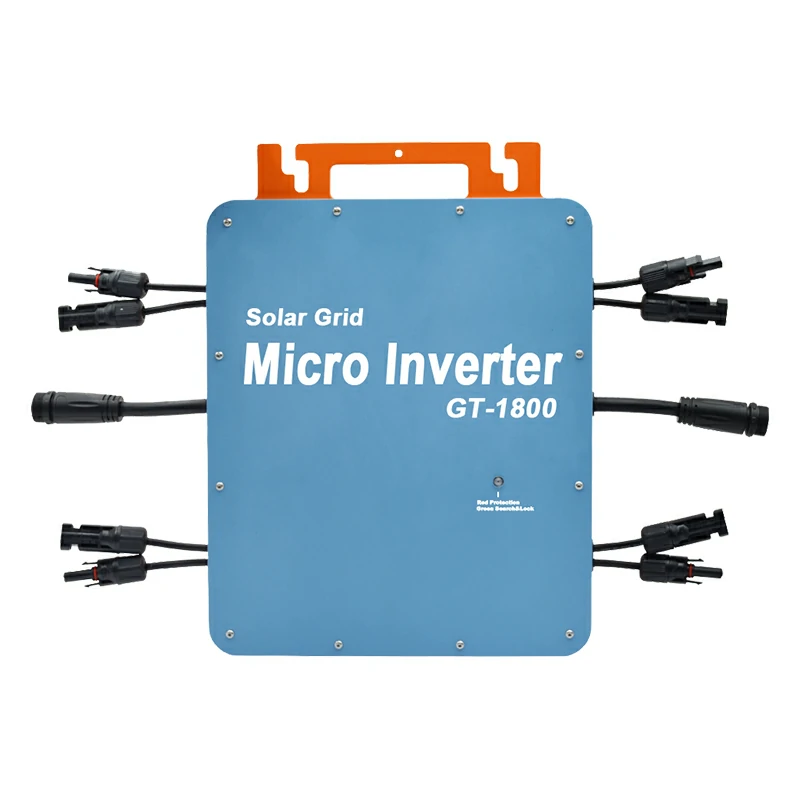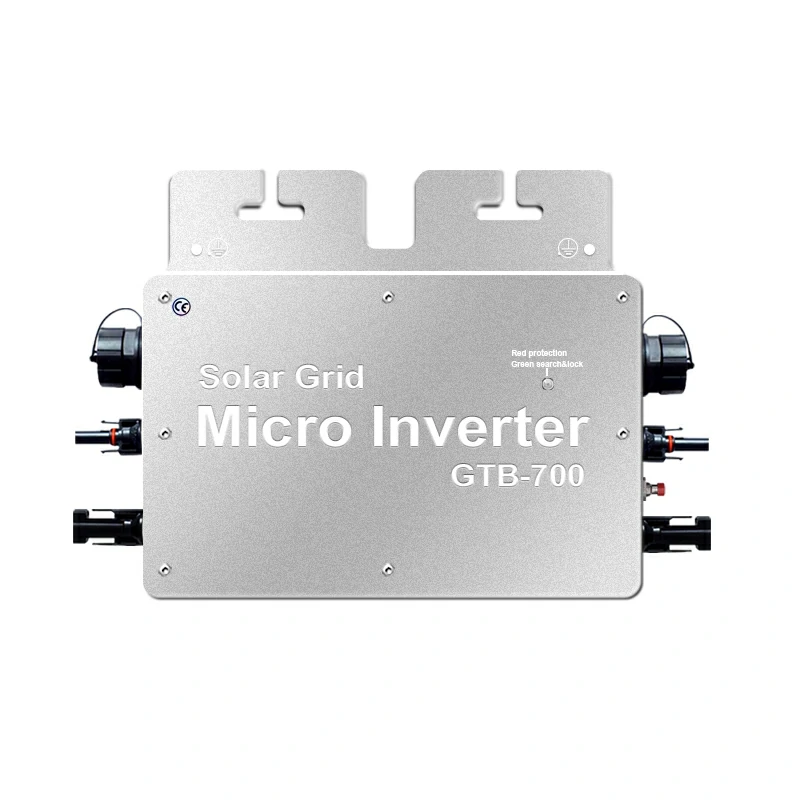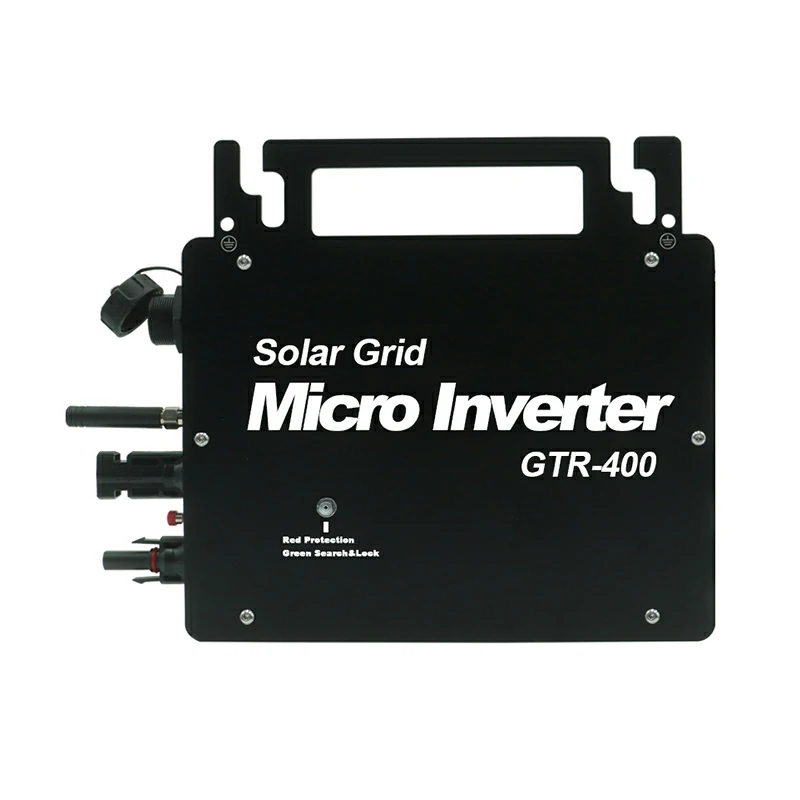String Inverter Introduction
A string inverter is a device that converts the DC power from PV panels into AC power for household use. It is one of the core components of a PV power system. Simply put, a string inverter connects multiple solar panels in a string and, through a common inverter, directly converts the DC power to AC power for household use.
Advantages of string inverters
Easy Troubleshooting: String inverters are beautiful because they are simple. Since you only need one of these bad boys to convert DC to AC, it’s easier to identify and fix any problems that may arise in your solar system. You won’t have to run around when problems arise.
Affordable Option: Installing a single-string inverter is an inexpensive option compared to a microinverter. String inverters have fewer person-hours and are less expensive, making solar power more affordable for many homeowners.
Fewer Wiring Hassles: With fewer connections between the solar panels and the string inverter, the chances of a wiring mishap are significantly reduced. Say goodbye to the hassle of improper wiring!

Disadvantages of string inverters
Partial shading efficiency: This is where the problem with string inverters comes in. Since string inverters rely on solar panels connected in series, if the output of one of the panels is affected (let’s say it’s shaded for a part of the day), the entire set of panels will be affected in the same way. Shading is, therefore, a real killer for string inverters.
Limited system expansion: If you plan to expand your solar array in the future, be prepared for some complications. String inverters operate well near peak capacity. Therefore, to ensure optimal performance, additional panels require separate string inverters. This means more components, more wiring and more cost.
Shorter lifespan: String inverters typically have a warranty of 8 to 12 years, while microinverters have a warranty of up to 25 years. Like sprinters versus marathon runners, string inverters have a shorter race.
Monitoring Limitations: Unfortunately, with a string inverter system, you can’t monitor the performance of individual panels. While you can view total solar power generation, detecting problems with specific panels (such as cracks, defects, or debris) becomes a blind spot.
Introduction to Microinverters
Microinverters are inverters with power less than or equal to 1,000 watts in a PV power system, which utilizes module-level MPPT technology and is called micro PV grid-tied inverters.
The term ‘micro’ is used in relation to traditional centralized inverters. Conventional PV inverters connect all the DC power generated by the PV cells in the sunlight in series and then invert the DC power to AC power via an inverter to be connected to the grid; microinverters invert each module.
The advantage of microinverter products produced by microinverter manufacturers is that each module can be independently controlled by MPPT, which can significantly improve overall efficiency and avoid the centralized inverter’s high DC voltage, poor low light effect, barrel effect, and other problems.

Benefits of Microinverters
Fast shutdown capability: Safety first, my friend! Microinverters are compliant with the latest electrical codes that require solar systems to shut down quickly. This ensures the safety of first responders or firefighters when they need to work on the roof or deal with power lines.
Maximize Power Generation: The most significant advantage of microinverters is the ability to maximize the amount of power generated by each panel. Unlike string inverters, which limit power generation based on the lowest-performing panel, microinverters work in parallel. This means that each panel can maximize its energy and provide as much power as possible to the grid.
Ideal for challenging installations: Panels facing multiple directions or dealing with shade from trees or large chimneys? Microinverters are here to help! These nifty devices adapt to variations in power generation throughout the day, ensuring you harvest all the energy the sun has to offer. Standard inverters may leave you in the shade.
Extended Lifespan: Microinverters come with up to a 25-year warranty, proving that the technology has come a long way. Manufacturers now have confidence in their products, so you can expect them to go the distance.
Panel-level monitoring: With microinverters, you can play detective and monitor the production of each panel. Look for any underperforming panels or issues that may be hindering solar output. It’s like having a solar watchdog on your roof.
Easy System Expansion: Planning to expand your solar system in the future? No worries! Microinverters can be added seamlessly, one by one. Adding panels and microinverters to your existing setup is a breeze, eliminating the need to purchase and install additional string inverters.
Which solution is best for you?
We typically prefer to use power optimizers and string inverters. They strike a good balance between meeting quick downtime requirements, cost-effectiveness and ease of troubleshooting.
However, if you have very complex roof or shading issues, then a microinverter may be the best solution for you.
But don’t be swayed by the opinions of others; explore all your options, consider your unique situation, and consult with a trusted solar professional before making a final decision. They’ll help you make an informed choice that meets your needs and maximizes the benefits of solar power.
As you can see, string inverters and microinverters compete in the solar energy arena. Remember, the power is in your hands—or rather, on your roof. Choose wisely and let the sun work its magic!
Frequently Asked Questions
What are the main differences between string inverters and microinverters?
A string inverter is a centralized device that converts the DC power generated by multiple series-connected solar panels into AC power. A micro inverter is installed under each solar panel and converts the DC power generated by each solar panel into AC power.
Which solution is better for systems with shading issues?
Microinverters are usually better suited for systems with shading issues. Unlike string inverters, which can be severely affected by shading from one panel, microinverters allow each panel to operate independently, maximizing power generation even in shaded areas.
What kind of inverters can monitor the performance of individual solar panels?
Yes, you can use microinverters to monitor the performance of individual solar panels. Each microinverter has a monitoring function that allows you to track the power generation of each solar panel separately. However, with string inverters, monitoring is usually limited to the output of the entire system.
How do I choose an inverter for my solar system?
The choice between string inverters and microinverters depends on your specific needs and roof conditions. String inverters are less expensive and are suitable for simple systems with no shading issues; microinverters are ideal for complex or shaded systems and are more flexible for expansion. Always consult a solar professional before deciding to ensure optimal performance and return on investment for your system.




